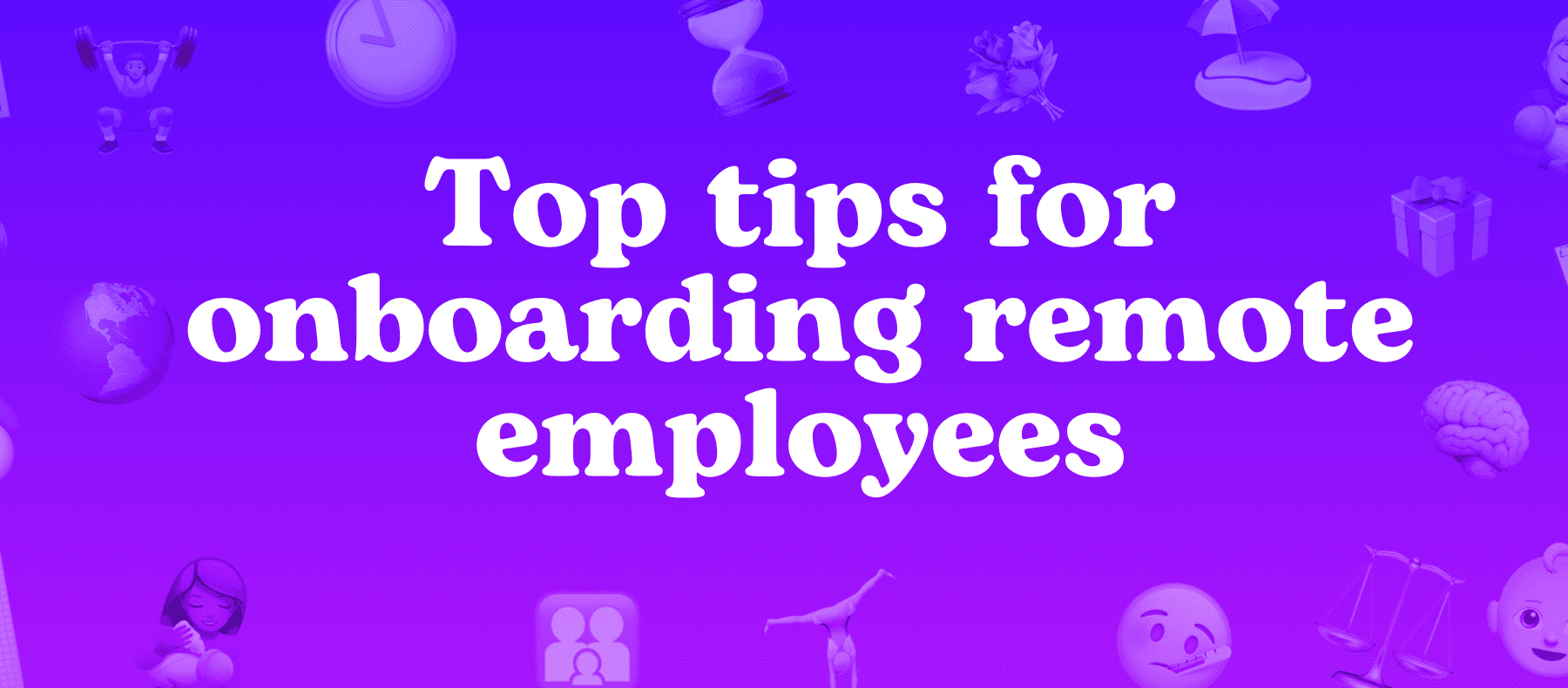Top tips for onboarding remote employees
A strong remote onboarding experience is essential for new employees to feel welcomed, connected, and set up for long-term success.
25th Apr 2024

Hiring and onboarding remotely is really hard to get right. We’ve spoken to countless companies about the successes and failures that they’ve had, and recently we had the opportunity to put some tips and theories into practice as we hired some awesome new joiners to Flexa completely remotely!
Their feedback was excellent (otherwise we probably wouldn’t be writing this blog!), so we wanted to share our top tips for remote onboarding to help other companies get it right.
1. Have a very clear plan and communicate it in advance
Not having the chance to meet someone on day one and introduce them to the team, and their new role, means that you can all end up a bit lost as to what you’re doing in the first few days.
Having a very clear, timetabled plan detailing what each person involved in onboarding is doing is key to making sure that your new hire feels settled from the get-go.
Ensure that introductions to the company and team are scheduled early-on (ideally on the first day) so that you don’t make your new hire feel like they’re not a priority to the rest of the team.
Our step-by-step for a plan would look something like this:
- Get their email set up in advance and add in calendar invites to fill out a lot of their first day. Send a timetable across to their personal email in advance so that they can prepare.
- Meetings like “a potted history of the company”, “meet your manager”, and “your role run-through” are really good ones to cover on day 1
- Set up a Trello board with “day 1 tasks”, “week 1 tasks” and “month 1 tasks” to ensure that, whenever they have downtime, there’s something for your new hire to get stuck into
- Keep checking in! I always assume that every company uses Slack but, if not, make sure you have some form of instant messaging tool - being able to fire across questions without the formality of an email is essential
2. Over-prescribe in the first few weeks
It’s so worrying for new employees when they feel like they have nothing to do, so making sure that there’s always something that they can pick up (like with the Trello board idea) helps to relieve that anxiety around not being useful.
Furthermore, it’s good to be super-prescriptive in the first month or so of someone joining. Set out, pretty much day-by-day, what you’d like the person to do. Obviously this isn’t sustainable as a long-term management tactic (nor should it be) but there’s nothing better than knowing exactly what tasks are expected of you, and how to do them, when you’ve just joined a company.
This can be done in short 10 min meetings at the start of the day, across Slack, in Trello or Monday, or in a pack that is full of all of the resources and instructions needed to do the role (we’d recommend doing the latter anyway). Of course, people still value the freedom to work things out for themselves, so just make sure you’re striking that balance!
Make sure that you continue to ask for their feedback on things two - setting up a two-way dynamic from the very beginning is crucial for success. Communication is the only way that distributed teams can forge a connection and culture within an organisation
3. Make sure that there’s someone they can go to with “silly questions”
On the subject of communication - everyone has silly questions that they need to ask, but when you first join a company you don’t know who to ask and worry that you’ll look stupid.
Setting up every new joiner with a peer that they can go to with questions and ensuring that the nominated person checks in regularly for a virtual coffee or a quick chat can help to ease those worries. This approach will immediately improve productivity of new hires as they’re not spending time worrying about things that they don’t know!
4. Introduce them to the tech and tools you use
To set your remote new hires up for success, it's important to give them with the right tools and resources from the start. To ensure a smooth and productive onboarding experience:
Make sure your new hires have all the equipment they need, such as a laptop, monitor, and headset, before their first day. Give clear instructions for setting up and accessing any required software or systems.
By investing in the right tools and resources, you'll empower your remote new hires to hit the ground running and make valuable contributions to your team from day one.